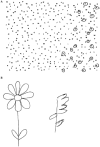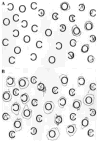Spatial neglect: clinical and neuroscience review: a wealth of information on the poverty of spatial attention
- PMID: 18990119
- PMCID: PMC2962986
- DOI: 10.1196/annals.1444.008
Spatial neglect: clinical and neuroscience review: a wealth of information on the poverty of spatial attention
Abstract
Hemispatial neglect (HSN) is a frequent, conspicuous neurobehavioral accompaniment of brain injury. Patients with HSN share several superficial similarities, leading earlier clinical neuroscientists to view neglect as a unitary condition associated with brain structures that mediate relatively discrete spatial cognitive mechanisms. Over the last two decades, research largely deconstructed the neglect syndrome, revealing a remarkable heterogeneity of behaviors and providing insight into multiple component processes, both spatial and nonspatial, that contribute to hemispatial neglect. This review surveys visual HSN, presenting first the means for detection and diagnosis in its manifold variations. We summarize cognitive operations relevant to spatial attention and evidence for their role in neglect behaviors and then briefly consider neural systems that may subserve the component processes. Finally, we propose several methods for rehabilitating HSN, including the challenges facing remediation of such a heterogeneous cognitive disorder.
Figures




References
-
- Buxbaum LJ, Ferraro MK, Veramonti T, et al. Hemispatial neglect: Subtypes, neuroanatomy, and disability. Neurology. 2004;62:749–56. - PubMed
-
- Heilman KM, Watson RT, Valenstein E. Neglect and related disorders. In: Heilman KM, Valenstein E, editors. Clinical Neuropsychology. Oxford; New York, NY: 2003. pp. 296–346.
-
- Sinnett S, Soto-Faraco S, Spence C. The co-occurrence of multisensory competition and facilitation. Acta Psychol (Amst) 2008 in press. - PubMed
-
- Witten IB, Knudsen EL. Why seeing is believing: merging auditory and visual worlds. Neuron. 2005;48:489–496. - PubMed
Publication types
MeSH terms
Grants and funding
LinkOut - more resources
Full Text Sources
Miscellaneous

